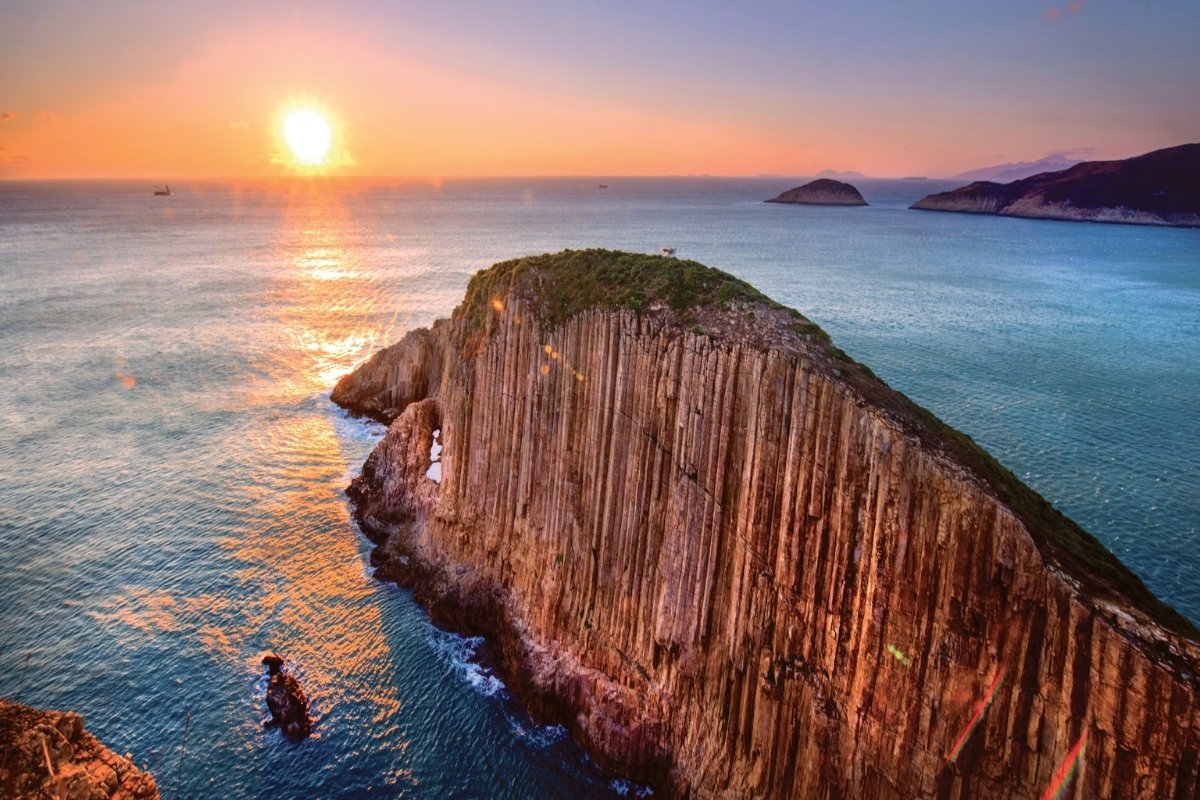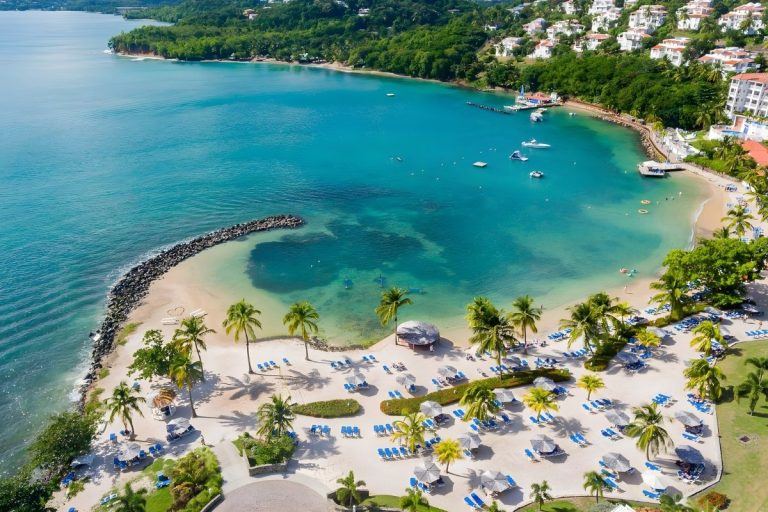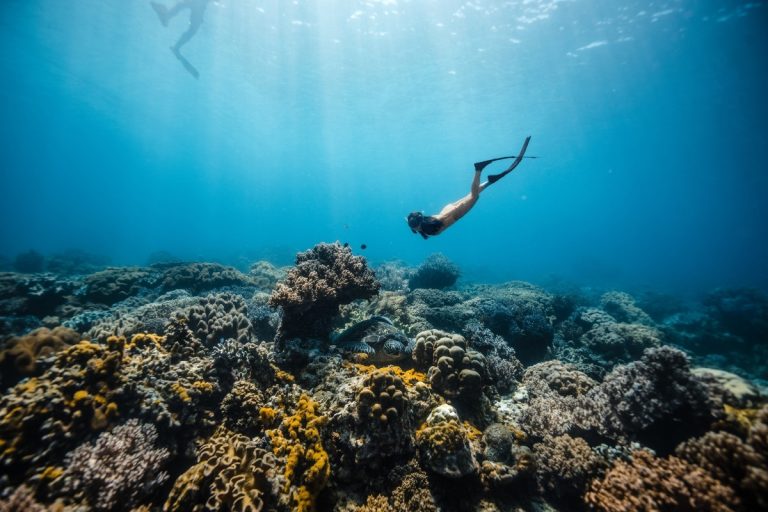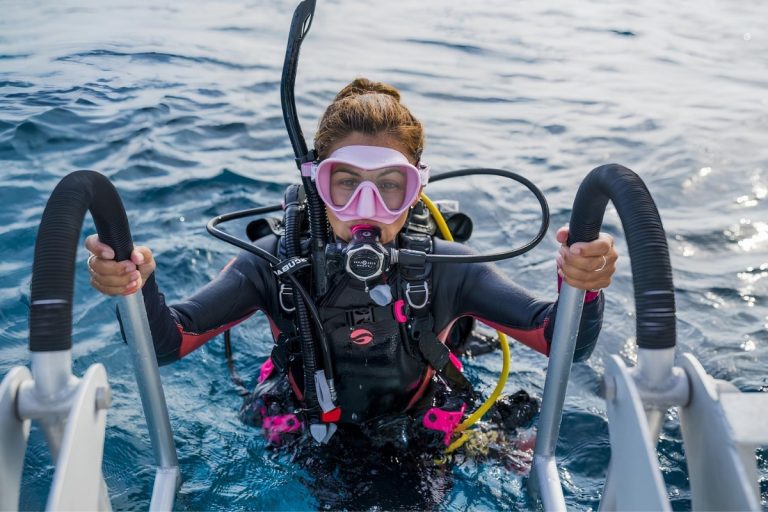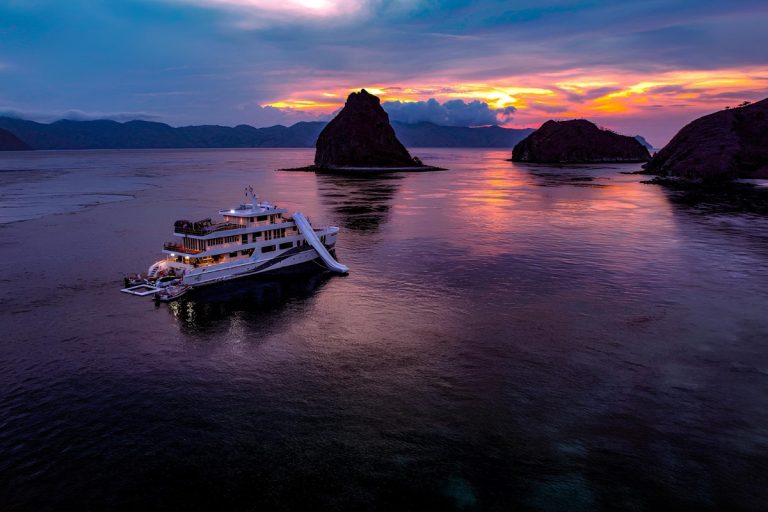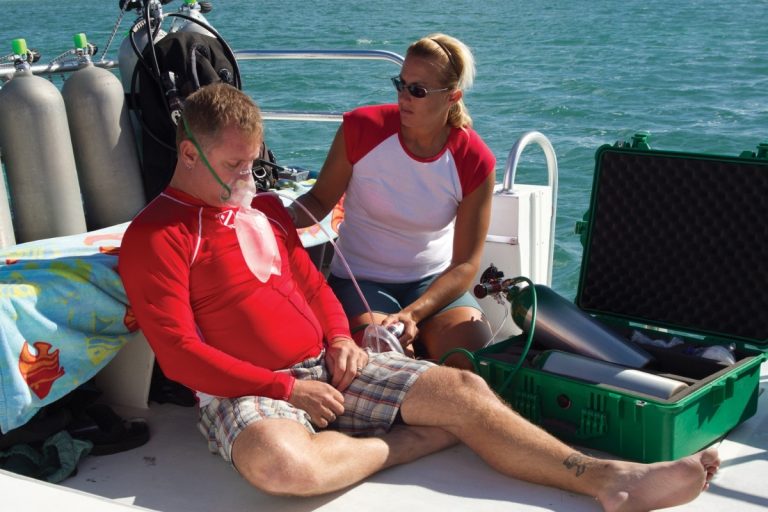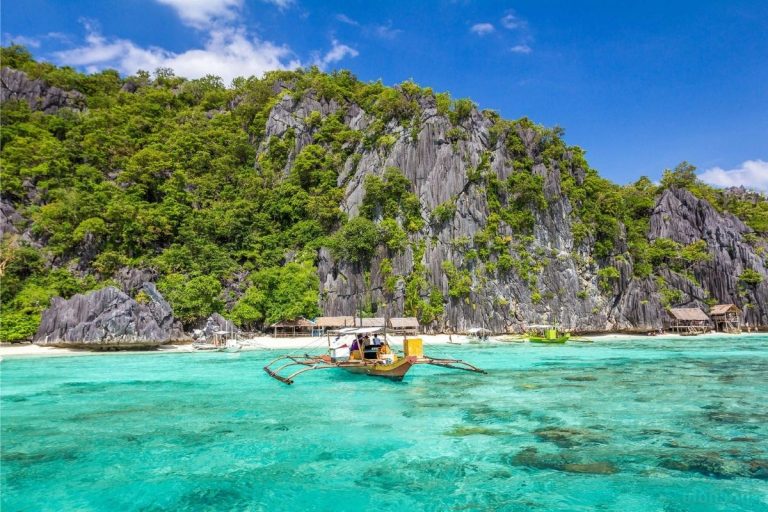- Introduction to Diving in Hong Kong (150-200 words)
- Top 10 Dive Sites (150-200 words)
- Best Seasonal Destinations for Divers (150-200 words)
- Planning Your Dive Trip (150-200 words)
- Liveaboard vs. Day Trips (150-200 words)
- Health & Safety in Diving (150-200 words)
- Budget-Friendly Dive Vacations (150-200 words)
- Engaging in Conservation Efforts (150-200 words)
- Frequently Asked Questions
- Exploring the Depths of Hong Kong
Introduction to Diving in Hong Kong (150-200 words)
Hong Kong might be famous for its towering skyscrapers and bustling harbor, but beneath the surface lies an aquatic wonderland that surprises many visitors. The territory’s waters offer an incredible variety of diving experiences, from shallow coral gardens perfect for beginners to challenging deep-water sites that test even experienced divers.
The local diving community has grown tremendously over the past decade, with numerous dive centers offering everything from basic certification courses to advanced technical diving programs. Many operators also provide comprehensive travel booking services for dive resorts throughout the region, making it easy to extend your underwater adventures beyond Hong Kong’s borders.
What makes diving here particularly special is the unexpected biodiversity. Despite being in one of the world’s busiest shipping lanes, Hong Kong’s marine protected areas have allowed coral reefs to flourish and fish populations to recover. The contrast between the urban landscape above and the thriving underwater ecosystem below creates a truly unique diving experience that you won’t find anywhere else in the world.
Overview of Hong Kong’s Dive Scene (80-100 words)
The diving scene in Hong Kong centers around several key areas, each offering distinct underwater landscapes. The eastern waters near Sai Kung provide the clearest visibility and most diverse marine life, while the southern islands offer dramatic underwater topography with swim-throughs and caverns. Local dive shops are well-equipped and staffed by certified instructors who know these waters intimately. Most sites are accessible by boat within 30-45 minutes from various departure points, making day trips convenient for both locals and tourists. The diving community here is welcoming and passionate about sharing their knowledge of these hidden underwater gems.
Importance of Conservation in Diving (80-100 words)
Conservation efforts play a crucial role in maintaining Hong Kong’s underwater ecosystems. Local dive operators actively participate in marine protection programs, organizing regular cleanup dives and coral restoration projects. These initiatives have shown remarkable results, with several sites showing significant recovery in coral coverage and fish populations over recent years. Divers visiting these waters are encouraged to follow responsible diving practices, including maintaining proper buoyancy to avoid damaging corals and participating in citizen science programs that monitor marine life. The success of these conservation efforts has made Hong Kong a model for urban marine protection in Asia.
Types of Dives Available (80-100 words)
Hong Kong’s waters cater to every diving preference and skill level. Shallow reef dives in 8-15 meters offer perfect conditions for underwater photography and marine life observation. For those seeking adventure, deeper sites reaching 30-40 meters feature dramatic drop-offs, underwater pinnacles, and occasional encounters with larger pelagic species. Night diving reveals a completely different world, with nocturnal creatures emerging from their daytime hiding spots. Wreck diving enthusiasts can explore several artificial reefs created from decommissioned vessels. Technical divers will find challenging sites with strong currents and greater depths that require advanced certification and experience.
Marine Life Sightings Around Hong Kong (80-100 words)
The marine biodiversity around Hong Kong consistently amazes first-time visitors. Colorful reef fish including parrotfish, angelfish, and butterflyfish populate the coral gardens, while larger species like groupers and snappers patrol the deeper waters. Seasonal visitors include whale sharks, manta rays, and various species of sea turtles. Macro photography enthusiasts will find abundant subjects including nudibranchs, seahorses, and pipefish hiding among the coral formations. The artificial reefs have become particularly productive, attracting schools of barracuda and jacks. Night dives often reveal octopuses, crabs, and other nocturnal creatures that remain hidden during daylight hours.
Top 10 Dive Sites (150-200 words)
Hong Kong’s top diving destinations offer an incredible range of underwater experiences that rival any tropical destination. These carefully selected sites represent the best of what local waters have to offer, from beginner-friendly shallow reefs to challenging deep-water locations that test experienced divers’ skills.
Each site has been chosen based on marine life diversity, underwater topography, accessibility, and overall diving experience. The locations span across Hong Kong’s territorial waters, from the crystal-clear eastern areas near Sai Kung to the dramatic southern coastlines around the outer islands. Water temperatures remain comfortable year-round, typically ranging from 18-28°C depending on the season.
Visibility varies significantly between sites and seasons, with the clearest conditions generally found during autumn and winter months when plankton blooms subside. Summer diving offers warmer waters and different marine life encounters, though visibility may be reduced. The sites listed here have been selected to provide variety in depth, difficulty level, and marine ecosystems, ensuring that divers of all experience levels can find suitable locations for memorable underwater adventures.
Brief Overview of Each Site (80-100 words)
- Sharp Island: Perfect for beginners with shallow coral gardens and calm conditions
- Bluff Island: Features dramatic underwater cliffs and swim-through formations
- Basalt Island: Known for its unique geological formations and diverse fish populations
- Trio Beach: Offers excellent macro photography opportunities in protected waters
- Double Island: Popular for its artificial reef and large fish aggregations
- Grass Island: Features extensive soft coral formations and gentle currents
- Crescent Island: Provides challenging drift dives with pelagic species encounters
- Shelter Island: Ideal for night diving with abundant nocturnal marine life
- High Island: Offers deep-water diving with dramatic underwater topography
- Tung Ping Chau: Remote location with pristine coral formations and excellent visibility
Key Features of Each Location (80-100 words)
Sharp Island stands out for its beginner-friendly environment, featuring maximum depths of 12 meters and consistently calm conditions. Bluff Island’s underwater cliffs create dramatic backdrops for photography, while its swim-throughs add excitement for intermediate divers. Basalt Island’s volcanic origins have created unique underwater formations that support diverse marine ecosystems. The artificial reef at Double Island has become a magnet for large schools of fish, making it a favorite among underwater photographers. Grass Island’s soft coral gardens create colorful underwater landscapes, while Crescent Island’s strong currents attract larger pelagic species. Each location offers distinct characteristics that appeal to different diving interests and skill levels.
Accessibility and Best Times to Visit (80-100 words)
Most sites are accessible year-round, though conditions vary seasonally. Spring and autumn provide the best overall diving conditions with moderate temperatures, good visibility, and calm seas. Summer offers the warmest water temperatures but may have reduced visibility due to plankton blooms. Winter diving can be excellent for visibility but requires thicker wetsuits due to cooler water temperatures. Boat departures typically operate from Sai Kung, Aberdeen, or other coastal locations depending on the chosen site. Advanced booking is recommended, especially during weekends and holidays when local dive operators experience high demand. Weather conditions can change rapidly, so flexible scheduling is advisable for the best diving experiences.
Best Seasonal Destinations for Divers (150-200 words)
Timing your diving adventures around Hong Kong requires understanding the seasonal patterns that affect underwater conditions. Each season brings unique advantages and challenges that can significantly impact your diving experience. The key is matching your diving goals with the optimal seasonal conditions.
Spring months from March to May offer some of the most balanced conditions, with improving visibility as winter storms subside and water temperatures beginning to warm. This period is ideal for divers who want good conditions without the summer crowds. The marine life is particularly active during this time as many species begin their breeding cycles.
Summer diving from June to August provides the warmest water temperatures, making it comfortable for extended bottom times and perfect for those who prefer minimal wetsuit protection. However, this season also brings increased plankton activity, which can reduce visibility but creates excellent conditions for macro photography and night diving.
Autumn represents the premium diving season, with September to November offering the clearest visibility and most stable weather conditions. This is when many experienced divers plan their most ambitious underwater photography projects and technical diving adventures.
Seasonal Considerations for Diving (80-100 words)
Water temperature fluctuations throughout the year require different wetsuit configurations, from 3mm suits in summer to 5mm or dry suits during winter months. Monsoon patterns significantly affect sea conditions, with the southwest monsoon bringing rougher seas during summer and the northeast monsoon creating challenging conditions in winter. Plankton blooms typically occur during warmer months, reducing visibility but increasing opportunities for macro photography. Typhoon season from May through November can disrupt diving schedules, requiring flexible planning. Marine life behavior changes seasonally, with different species being more active or visible during specific months, making timing crucial for targeted wildlife encounters.
Top Seasonal Dive Locations (80-100 words)
Eastern sites like Sharp Island and Grass Island perform best during autumn and winter when northeast winds are offshore, creating calmer conditions. Southern locations including Bluff Island and High Island are more suitable during spring and early summer when southwest winds haven’t yet intensified. Protected sites such as Trio Beach and Shelter Island remain diveable year-round due to their sheltered positions. Exposed locations like Crescent Island require careful weather monitoring and are best visited during calm periods between seasonal wind patterns. Understanding these patterns helps divers select appropriate sites based on current conditions rather than fighting against seasonal challenges.
How to Plan Your Diving Trips (80-100 words)
Successful dive trip planning begins with monitoring weather forecasts and sea conditions at least a week in advance. Local dive operators provide valuable insights into current conditions and can recommend the best sites for your skill level and interests. Booking flexibility is essential, as conditions can change rapidly in Hong Kong’s dynamic marine environment. Consider planning multiple potential sites for each dive day to maximize your chances of getting in the water. Building relationships with local dive shops provides access to insider knowledge about emerging sites and optimal timing. Advanced certification and experience open up more site options and increase your chances of memorable diving experiences.
Planning Your Dive Trip (150-200 words)
Successful dive trip planning requires careful attention to equipment, logistics, and local conditions. Hong Kong’s unique diving environment presents both opportunities and challenges that require specific preparation. The key to a memorable diving experience lies in thorough preparation and flexibility to adapt to changing conditions.
Equipment considerations go beyond basic diving gear, as Hong Kong’s variable conditions may require different wetsuit thicknesses, underwater cameras with macro capabilities for the abundant small marine life, and backup equipment for extended diving days. Many local dive shops offer rental equipment, but serious divers often prefer bringing their own gear to ensure proper fit and familiarity.
Local dive operators provide invaluable services including boat transportation, guide services, and equipment rental. Building relationships with reputable operators enhances your diving experience through their intimate knowledge of local conditions and hidden gems. Many also offer comprehensive travel packing list for divers guidance to help you prepare appropriately for Hong Kong’s specific diving conditions.
The logistics of diving in Hong Kong involve understanding transportation options, accommodation near dive departure points, and backup plans for weather-related cancellations. Proper planning ensures you maximize your underwater time while minimizing stress and complications.
Essential Gear and Equipment (80-100 words)
Hong Kong’s diving conditions require versatile equipment selection. A 5mm wetsuit provides comfort across most seasons, though summer divers may prefer 3mm suits and winter diving might require thicker protection. Underwater cameras with macro capabilities are essential for capturing the abundant small marine life. Dive computers with conservative decompression algorithms are recommended due to the multiple-dive-per-day culture here. Reef-safe sunscreen protects both divers and marine ecosystems. Dive lights are crucial even for day diving due to swim-throughs and caverns at many sites. Quality fins and masks ensure comfort during longer dive days, while backup equipment provides peace of mind in remote locations.
Packing Tips for Divers (80-100 words)
Smart packing for Hong Kong diving involves balancing equipment needs with airline restrictions and local availability. Pack essential personal items like masks, regulators, and dive computers in carry-on luggage to avoid dive trip disruption from lost baggage. Heavy items like weights and tanks are available locally, saving significant baggage weight. Waterproof bags protect electronics and spare clothing from boat spray and humidity. Pack for variable weather conditions, including rain gear and warm clothing for boat rides. Consider bringing backup batteries for dive computers and cameras, as specific models may not be readily available locally. Efficient packing maximizes diving time while minimizing hassle.
Travel Logistics and Preparation (80-100 words)
Hong Kong’s excellent transportation infrastructure makes reaching dive departure points relatively straightforward. Most dive boats depart from Sai Kung, accessible by public transport or taxi from central Hong Kong. Advance booking with dive operators is essential, especially during peak seasons and weekends. Consider staying near departure points to minimize early morning travel time. Weather monitoring becomes crucial during typhoon season, requiring flexible scheduling and potential backup activities. Travel insurance should cover diving activities and equipment. Understanding local customs and basic Cantonese phrases enhances interactions with local dive operators and crew members, contributing to a more enriching cultural diving experience.
Liveaboard vs. Day Trips (150-200 words)
Choosing between liveaboard diving and day trips around Hong Kong depends on your diving goals, budget, and available time. Each option offers distinct advantages that cater to different types of diving experiences and personal preferences.
Day trips dominate Hong Kong’s diving scene due to the territory’s compact size and excellent boat access to most dive sites. Most locations are reachable within 30-45 minutes by boat, making multiple-dive day trips highly practical. This approach allows divers to experience Hong Kong’s cultural attractions between diving days and provides flexibility to adjust plans based on weather conditions.
However, the liveaboard vs day trip pros and cons comparison reveals interesting considerations for Hong Kong diving. While traditional multi-day liveaboards are less common in Hong Kong waters due to the proximity of sites, some operators offer overnight trips to more remote locations or extended diving packages that combine multiple days of diving with onboard accommodation.
The choice often comes down to whether you prefer the convenience and cultural immersion of land-based diving or the intensive underwater focus that comes with boat-based accommodation. Both options provide access to Hong Kong’s excellent dive sites, but the experience differs significantly in terms of pace, social interaction, and overall adventure style.
Understanding Liveaboard Diving (80-100 words)
Liveaboard diving in Hong Kong typically involves overnight trips to remote locations like the outer islands or extended stays in nearby waters. These trips maximize bottom time by eliminating daily travel to and from shore, allowing for early morning and night dives that day-trip operators cannot offer. Onboard accommodation ranges from basic bunks to comfortable cabins, depending on the vessel and operator. Meals are typically included, creating a social atmosphere among divers. Limited liveaboard options in Hong Kong mean advance booking is essential, and trips often fill quickly during optimal diving seasons when weather conditions are most favorable.
Advantages of Day Trips (80-100 words)
Day trips offer maximum flexibility for Hong Kong diving, allowing divers to adjust plans based on daily weather conditions and personal preferences. The cost is typically lower than liveaboard options, and divers can choose different operators and sites each day. Land-based accommodation provides more comfort and amenities than boat cabins, while access to Hong Kong’s restaurants and attractions adds cultural value to diving holidays. Day trips accommodate varying group sizes and skill levels more easily, making them ideal for mixed groups or families. The ability to return to shore each evening also appeals to divers who prefer familiar sleeping arrangements and reliable internet connectivity.
Choosing the Right Option for You (80-100 words)
Your choice between liveaboard and day trip diving should align with your priorities and circumstances. Budget-conscious divers often find day trips more economical, especially when factoring in accommodation and meal costs. Experienced divers seeking intensive underwater time may prefer liveaboard options for their extended diving schedules and access to remote sites. Consider your comfort level with boat accommodation, seasickness susceptibility, and desire for cultural experiences beyond diving. Group dynamics also play a role, as day trips offer more flexibility for mixed skill levels and interests. Weather sensitivity favors day trips, which can be cancelled or rescheduled more easily than multi-day liveaboard commitments.
Health & Safety in Diving (150-200 words)
Diving safety takes on particular importance in Hong Kong’s waters due to the combination of urban proximity, variable conditions, and sometimes challenging dive sites. Understanding and preventing diving-related health issues ensures that your underwater adventures remain enjoyable and safe.
The most serious concern for divers worldwide is decompression sickness, a condition that can occur when dissolved nitrogen in the blood forms bubbles during ascent. Hong Kong’s diving conditions, including multiple dives per day and varying depths, require careful attention to decompression protocols and safety procedures.
Local dive operators maintain high safety standards, with most following international certification agency guidelines and maintaining emergency oxygen equipment on dive boats. The proximity to excellent medical facilities in Hong Kong provides additional peace of mind, though prevention remains far superior to treatment.
Health and safety decompression sickness prevention involves understanding your personal limits, following conservative dive profiles, and maintaining proper hydration and physical fitness. The warm, humid climate can contribute to dehydration, which increases decompression sickness risk. Proper preparation, including medical fitness evaluation and refresher training if you haven’t dived recently, forms the foundation of safe diving practices in these waters.
Understanding Decompression Sickness (80-100 words)
Decompression sickness occurs when nitrogen dissolved in body tissues forms bubbles during ascent, potentially causing joint pain, neurological symptoms, or more serious complications. Risk factors include rapid ascents, repetitive diving, dehydration, fatigue, and individual physiological factors. Symptoms can appear immediately after surfacing or up to 24 hours later, ranging from mild joint discomfort to severe neurological impairment. Hong Kong’s multiple-dive culture increases exposure risk, making conservative dive profiles essential. Understanding that even conservative diving practices cannot eliminate all risk helps divers make informed decisions about their diving activities and recognize when medical attention may be necessary.
Preventative Measures for Divers (80-100 words)
Prevention strategies focus on conservative diving practices and personal health management. Follow dive computer recommendations with additional safety margins, perform safety stops on every dive, and maintain slow ascent rates. Stay well-hydrated before, during, and after diving, as Hong Kong’s humid climate increases fluid loss. Avoid alcohol before diving and limit consumption between dive days. Maintain physical fitness appropriate for diving activities, and consider medical evaluation if you have any health concerns. Use conservative decompression algorithms on dive computers, extend surface intervals between dives, and avoid flying or ascending to altitude for appropriate periods after diving.
Emergency Procedures and First Aid (80-100 words)
Emergency preparedness begins with knowing local emergency contact numbers and the location of the nearest recompression chamber. Hong Kong maintains excellent emergency medical services with helicopter evacuation capabilities for serious diving accidents. Basic first aid training should include recognition of decompression sickness symptoms, oxygen administration, and emergency signaling procedures. Dive boats should carry emergency oxygen and communication equipment, with crew trained in emergency response procedures. Travel insurance covering diving activities and emergency evacuation provides financial protection. Establishing emergency action plans before diving, including buddy responsibilities and emergency contact information, ensures rapid response when needed. Regular first aid training updates maintain skill proficiency.
Budget-Friendly Dive Vacations (150-200 words)
Hong Kong diving can be surprisingly affordable when approached strategically, making it accessible to budget-conscious divers without compromising on experience quality. The key lies in understanding where to allocate your diving budget for maximum value and taking advantage of local cost-saving opportunities.
Accommodation represents one of the largest expenses, but Hong Kong offers various budget-friendly options from hostels to guesthouses, particularly in areas near dive departure points like Sai Kung. Many divers find that staying slightly outside central Hong Kong significantly reduces accommodation costs while still providing convenient access to dive sites.
Local dive operators often provide package deals that include multiple dives, equipment rental, and boat transportation at reduced per-dive costs. These packages become increasingly economical for longer stays or group bookings. Additionally, many operators offer weekday discounts when demand is lower and conditions are often just as good as weekend diving.
The concept of budget-friendly dive vacations extends beyond just diving costs to include transportation, meals, and activities between dives. Hong Kong’s excellent public transportation system, diverse food scene with options for every budget, and free cultural attractions help stretch your diving budget further while enriching your overall travel experience.
Cost-Effective Dive Packages (80-100 words)
Local dive operators frequently offer multi-dive packages that reduce per-dive costs significantly compared to single-dive bookings. Weekend packages typically include 4-6 dives over two days with equipment rental and boat transportation. Weekday diving often costs 20-30% less than weekend rates, making mid-week trips particularly economical. Group bookings for 6 or more divers usually qualify for additional discounts. Some operators offer seasonal promotions during slower periods, particularly during winter months when tourist numbers decrease. Certification course packages combining training with fun dives provide excellent value for new divers. Advanced booking often secures early-bird discounts, especially for popular diving seasons.
Tips for Saving Money While Diving (80-100 words)
Bringing your own basic equipment like mask, fins, and wetsuit eliminates daily rental fees that accumulate quickly over multiple dive days. Purchasing dive packages in advance often secures better rates than day-of bookings. Sharing accommodation with other divers reduces individual costs while creating opportunities for dive buddy partnerships. Eating at local restaurants and street food stalls provides authentic experiences at fraction of hotel restaurant costs. Using public transportation instead of taxis saves money while offering cultural immersion opportunities. Avoiding peak season diving reduces both accommodation and diving costs significantly. Joining local diving groups or online communities often provides access to group discounts and insider tips.
Finding Affordable Accommodation (80-100 words)
Budget accommodation options near dive departure points include hostels, guesthouses, and budget hotels that cater specifically to outdoor enthusiasts and divers. Sai Kung area offers several budget-friendly options within walking distance of dive boat departure points. Booking platforms often feature last-minute deals for budget accommodations, though advance booking during peak seasons ensures availability. Consider sharing apartments or vacation rentals with other divers to reduce individual costs while gaining kitchen access for meal preparation. Some dive operators offer package deals including basic accommodation, creating convenient one-stop booking. Location trade-offs, such as staying slightly further from central areas, can yield significant savings while maintaining dive site accessibility.
Engaging in Conservation Efforts (150-200 words)
Marine conservation has become an integral part of Hong Kong’s diving community, with local operators, international organizations, and individual divers working together to protect and restore underwater ecosystems. The success of these collaborative efforts has transformed several dive sites from degraded areas into thriving marine habitats.
The diving community’s involvement in conservation extends beyond simple participation to active leadership in marine protection initiatives. Regular cleanup dives remove debris from popular dive sites, while coral restoration projects help damaged reefs recover from environmental stresses. These hands-on activities provide divers with deeper connections to the marine environment while contributing tangible benefits to ecosystem health.
Citizen science programs allow recreational divers to contribute valuable data about marine life populations, coral health, and environmental conditions. This information helps marine biologists and conservation organizations make informed decisions about protection strategies and track the effectiveness of conservation measures over time.
The social aspect of conservation diving creates lasting friendships among participants while building a community committed to marine protection. Many divers find that participating in conservation efforts enhances their diving experiences by providing purpose beyond personal enjoyment and creating opportunities to learn from marine biology experts and experienced conservationists.
PADI’s Conservation Programs (80-100 words)
PADI’s conservation initiatives provide structured opportunities for divers to contribute to marine protection efforts worldwide. The Project AWARE program focuses on marine debris removal and shark protection, with local Hong Kong chapters organizing regular cleanup events and educational seminars. Specialty courses like the AWARE Coral Restoration certification teach divers practical skills for reef rehabilitation projects. The Marine Debris program specifically targets underwater and coastal cleanup efforts, providing training and resources for effective debris removal. These programs combine education with action, helping divers understand marine environmental challenges while providing practical ways to make positive impacts through their diving activities.
How Divers Can Get Involved (80-100 words)
Getting involved in conservation efforts begins with connecting with local dive operators and conservation organizations active in Hong Kong waters. Many dive shops organize monthly cleanup dives that welcome participants of all skill levels. Joining marine conservation groups provides access to training opportunities, volunteer projects, and educational workshops. Individual actions include practicing responsible diving techniques, participating in citizen science data collection, and advocating for marine protection policies. Social media platforms help divers share conservation messages and recruit others for volunteer activities. Regular participation in organized events builds relationships within the conservation community while developing expertise in marine protection techniques.
Benefits of Participation in Conservation Events (80-100 words)
Conservation diving provides personal satisfaction from contributing to marine ecosystem health while developing deeper understanding of underwater environments. Participants often gain access to exclusive dive sites and research areas not typically available to recreational divers. Working alongside marine biologists and conservation professionals provides educational opportunities that enhance diving knowledge and appreciation. The social connections formed through conservation activities often lead to lasting friendships and diving partnerships. Many participants report increased awareness of environmental issues and motivation to adopt more sustainable lifestyle practices. Conservation diving also develops leadership skills and provides networking opportunities within the marine science and conservation communities, potentially opening career pathways for interested individuals.
Frequently Asked Questions
What are the best dive sites for beginners in Hong Kong?
Sharp Island is ideal for beginners due to its shallow coral gardens and calm conditions.
When is the best time to dive in Hong Kong?
Autumn, from September to November, offers the clearest visibility and most stable weather conditions, making it the premium diving season.
What types of marine life can be seen while diving in Hong Kong?
Divers can expect to see a variety of marine life including colorful reef fish, larger species like groupers, seasonal visitors such as whale sharks and manta rays, and unique creatures like nudibranchs and seahorses.
How can divers participate in conservation efforts?
Divers can join local dive shops in organizing cleanup dives, participate in citizen science programs, and engage with marine conservation groups to contribute to protecting marine ecosystems.
What should divers pack for a trip to Hong Kong?
Divers should bring personal items like masks and regulators, pack appropriate wetsuits for the season, and ensure they have waterproof bags for electronics.
Exploring the Depths of Hong Kong
Diving in Hong Kong offers a unique blend of urban adventure and marine wonder, making it an attractive destination for divers of all levels. With vibrant marine life, diverse dive sites, and a strong commitment to conservation, the underwater experiences here are both rewarding and enriching. By planning effectively and engaging with local conservation efforts, divers can enjoy memorable adventures while contributing positively to the health of these stunning aquatic ecosystems.
